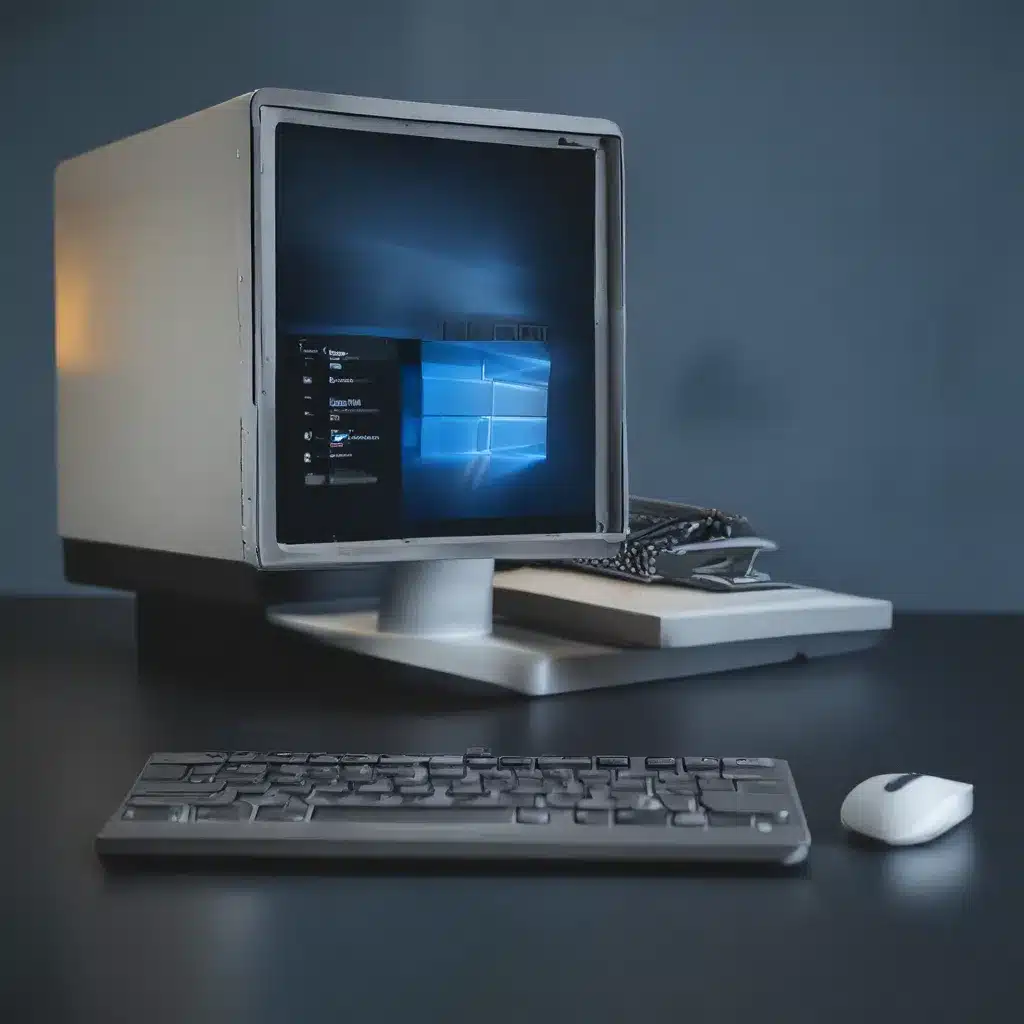
The Dreaded Windows 11 Upgrade: A Geek’s Survival Guide
As a self-proclaimed tech enthusiast, I know the struggle all too well. The release of Windows 11 has left many of us PC owners in a state of bewilderment, wondering if our trusty old machines are up to the task. But fear not, my fellow geeks! In this comprehensive guide, I’ll walk you through the process of installing Windows 11 on your “vintage” PC, ensuring you can embrace the latest and greatest without leaving your beloved hardware behind.
Understanding the Windows 11 System Requirements
First things first, let’s dive into the system requirements for Windows 11. Microsoft has set the bar high, leaving many of us wondering if our computers even come close to meeting the criteria. But fear not, my friends, for there are ways to overcome these hurdles.
The official system requirements for Windows 11 include a relatively modern processor (1 GHz or faster with 2 or more cores), at least 4GB of RAM, and 64GB of storage. Additionally, your device must have UEFI secure boot and Trusted Platform Module (TPM) version 2.0 enabled. According to Microsoft’s support forum, these requirements are in place to ensure a secure and stable Windows 11 experience.
Bypassing the System Requirements: A Geek’s Finest Hour
Now, I know what you’re thinking: “My trusty old machine doesn’t meet those lofty standards. Am I doomed to be left behind in the Windows 10 abyss?” Not on my watch, my friends! As the resident tech wizard, I’ve discovered a few tricks to help you circumvent these system requirements and get Windows 11 up and running on your “vintage” PC.
Step 1: Check Your Hardware
The first step is to assess your computer’s hardware. According to the YouTube tutorial, you can use a tool like Speccy or CPU-Z to determine if your processor and other key components meet the minimum requirements. If they do, you’re halfway there!
Step 2: Enable TPM and Secure Boot
Even if your hardware checks out, you’ll need to ensure that your computer’s BIOS is configured correctly. Specifically, you’ll need to enable Trusted Platform Module (TPM) version 2.0 and Secure Boot. This can be a bit of a tricky process, but the YouTube video I found provides a step-by-step guide to walk you through it.
Step 3: Bypass the System Requirements
Once you’ve verified your hardware and enabled the necessary BIOS settings, it’s time to unleash your inner tech wizard. There are a few ways to bypass the system requirements and install Windows 11 on your unsupported PC. One method involves using a Windows 11 installation media and manually editing the setup files to remove the hardware checks. Another option is to use a third-party tool like the Windows 11 Installation Assistant, which can help you sidestep the system requirements.
Embracing the Windows 11 Experience on Old PCs
Now that you’ve successfully installed Windows 11 on your trusty old machine, it’s time to embrace the new operating system and all it has to offer. Sure, you may not have all the fancy bells and whistles that come with the latest hardware, but that’s where your geek skills come into play.
Experiment with the new UI, explore the updated features, and don’t be afraid to tinker under the hood. Who knows, you might even discover some hidden gems that the average user would never stumble upon. And if you ever run into any issues or have questions, don’t hesitate to reach out to the tech support experts at itfix.org.uk. We’re always here to lend a helping hand and ensure your Windows 11 experience is as smooth as a freshly formatted hard drive.
So, my fellow tech enthusiasts, embrace the challenge, unleash your inner geek, and let’s conquer Windows 11 together – one old PC at a time!












